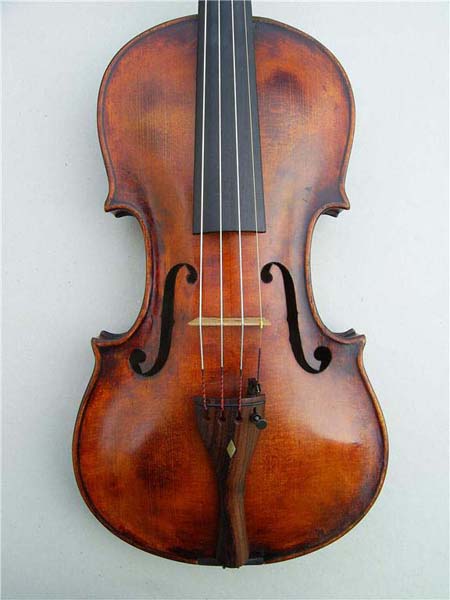
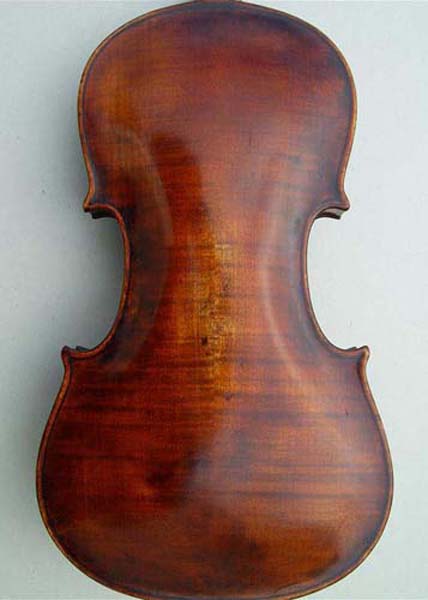
Joseph Thomas Klotz, Sr. 1799 |
This piece was purchased at an Ebay auction in 2006. The seller was a Russian, living near the Atlantic coast of Spain who had earned the trust of the hard pressed ethnic communities in central/eastern Europe and sold their heirloom violins with a 14 day trial. I purchased two from him and sent two authentic but unsatisfactory sounding fiddles back. I believe this to be an authentic Klotz, although stripped of most of its original varnish. It is made from good stock front and back and has a strong harmonious voice. A very good Mittenwald fiddle.This particular Klotz (1743 - 1811) was the son of Sebastian (1696 - 1775) and the grandson of Mathias (1656 - 1743). This violin was made in his last years. |
 |
 |
When I received it a strong odor of linseed oil was apparent. Convinced the sound was dulled by this, I let it out in the morning sun quite a few summer days until the linseed aroma dissipated. After a set up and periodic trials plus more drying time over many months, a fine, sympathetic voice was developing. However, as a result of my 'sun dried' process, the belly/rib joint sprang great leaks on both sides of the shoulder and saddle. I patiently and cleanly removed the belly, took photos then applied two coatings of a strong parchment gelatin solution to the inside of both plates. |
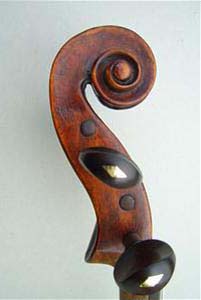 |
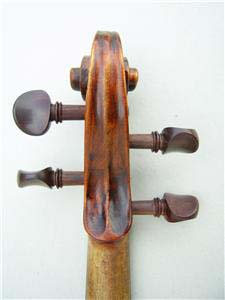 |
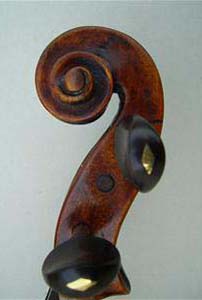 |
This baroque shaped head is very narrow at the throat, the eye is relatively tiny but the scrolls lack finesse and the ears are very close set |
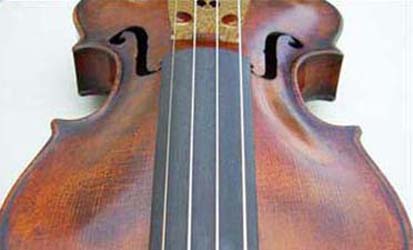 |
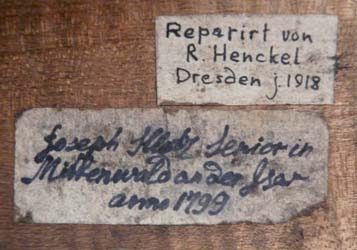 |
The photo (ab.L) shows the quick rise from the bouts typical of the "overbuilt" German tradition supposedly out of their dutiful copying of the Stainer pattern. (Ab R) is the label of Joseph Kloz, Sr. and that of the repairer in 1918. (Senior is the same in German as in English) and I also recall having read somewhere that between 1795 and 1801, this particular Klotz family for some reason used no printed labels. |
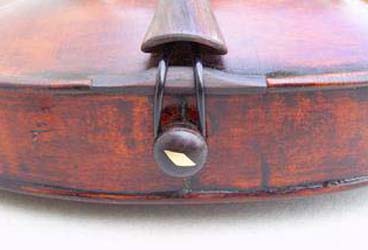 |
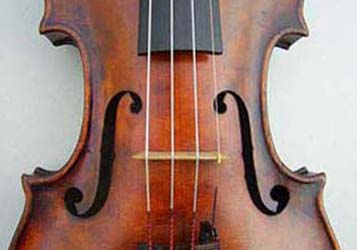 |
The original finish must have been an opaque brown. |
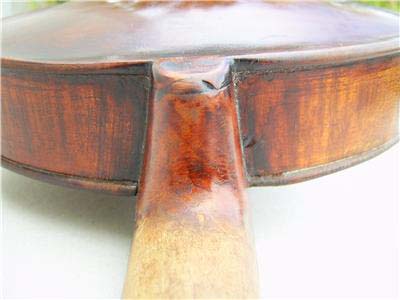 |
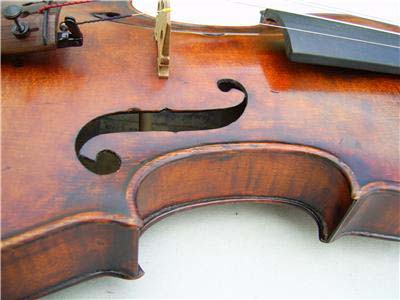 |
A chip off the old heel button! The bridge is quite low and the strings are 1/2" off the end of the board. I might have the fingerboard splinted rather than undergo an expensive and risky neck resetting, and it holds pitch when stored for long periods. |
Above -- an alhohol lamp and a thin palette knife -- the only tools I used to remove the top plate. |
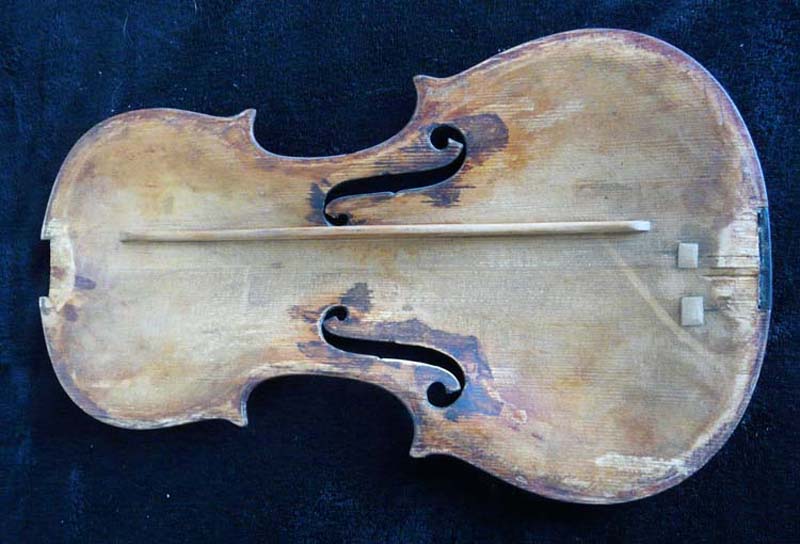 |
The bassbar was well attached at all points. Two cleats can be seen as well as the color of the overflow of original dark brown varnish . |
As an experiment in acoustics, I applied two liberal coats of parchment gelatin in water solution before closing. The closing was done by a local luthier. |
An unobstructed view of the profile of the table as if a 'cutaway' at midwaist. |
MEASUREMENTS |
SOUND QUALITY -- constantly improving -- current assessment is inconclusive |
return to the gallery page by clicking the link below http://stnichsigns.com/Makers'Orphans.html |